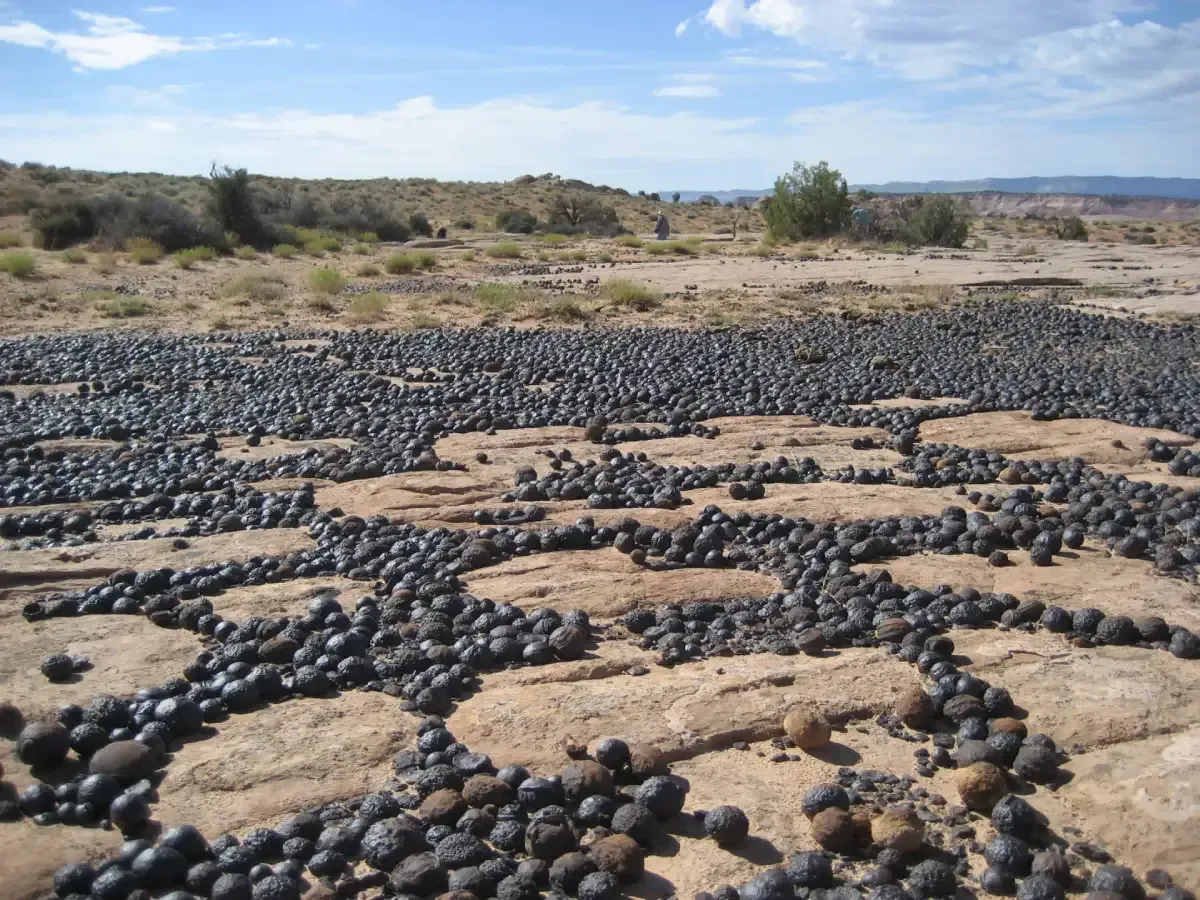Moqui Marbles: How Utah's Moqui Marbles Formed
Moqui Marbles, hematite concretions an iron ore. They are reported to have mystical properties in some cultures, and have a Mars connection.
The stony spheres are concretions — sandstone balls cemented by a hard shell of iron oxide minerals. Often called moqui marbles, acres of the chocolate-colored rocks are scattered across Utah and Arizona. They tumble from the pale, cream-colored Navajo Sandstone beds, when wind and water wash away the softer rock.
Moqui (pronounced "Mo-Key") Marbles consist of a sandstone center covered by a shell of hematite, an iron ore. They can be as small as an toy marble, or as large as eight inches in diameter. The majority of Moqui Marbles come from Utah’s Navajo Sandstone Formation (now part of Grand Staircase Escalante National Monument), and in Zion National Park.
For decades, the rocks were simply a geological oddity. The same type of stone formations, nicknamed "blueberries" have been discovered on Mars by the Opportunity Rover in 2005. This was predicted by Utah geologists who were studying environmental conditions that create the formations. However, there is a difference between the Earth marbles and Mars' blueberries, in that the Utah stones are mostly sandstone, and the Martian stones are pure iron oxide (rust). Scientists believe that the presence of rust can mean there was once water on Mars, and that in turn can be tied to the possibility of life.
A study reveals that the moqui marbles are no more than 25 million years old — a sharp contrast to the 190-million-year-old Navajo Sandstone. Marbles scattered on sandstone slopes in Grand Staircase-Escalante National Monument are only 2 million to 5 million years old. And on Arizona's Paria Plateau, the marbles' iron oxide rind is as young as 300,000 years old, researchers report in the September 2014 issue of the Geological Society of America Bulletin.
"They really represent a record of how water moved the rock millions of years ago, and the next generation can use them to understand water and life on other planets," said Marjorie Chan, co-author of the new study and a geologist at the University of Utah in Salt Lake City.
The iron oxide concretions found in the Navajo Sandstone exhibit a wide variety of sizes and shapes. Their shape ranges from spheres to discs; buttons; spiked balls; cylindrical hollow pipe-like forms; and other odd shapes. Although many of these concretions are fused together like soap bubbles, many more also occur as isolated concretions, which range in diameter from the size of peas to baseballs. The surface of these spherical concretions can range from being very rough to quite smooth. Some of the concretions are grooved spheres with ridges around their circumference.
%20(2).webp) |
| Tens of Moqui marbles on a sandstone slope. Credit: Marjorie Chan, University of Utah |
The abundant concretions found in the Navajo Sandstone consist of sandstone cemented together by hematite (Fe2O3), and goethite (FeOOH). The iron forming these concretions came from the breakdown of iron-bearing silicate minerals by weathering to form iron oxide coatings on other grains. During later diagenesis of the Navajo Sandstone while deeply buried, reducing fluids, likely hydrocarbons, dissolved these coatings.
When the reducing fluids containing dissolved iron mixed with oxidizing groundwater, they and the dissolved iron were oxidized. This caused the iron to precipitate out as hematite and goethite to form the innumerable concretions found in the Navajo Sandstone. Evidence suggests that microbial metabolism may have contributed to the formation of some of these concretions.
Concretions of all shapes and sizes are found all over the world. The curious rocks have inspired fantastical tales of fairies, meteorites and dinosaur eggs, but their origin is fairly mundane. Water flowing through sedimentary rock leaves behind minerals that glue together masses of sand, mud or other particles. Sometimes, a treasure — like a bone or a shell — hides inside.




%20(1).webp)
%20(1).webp)






